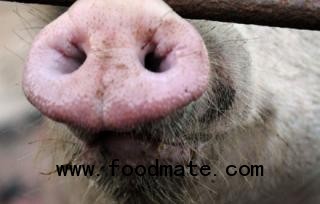
That's the latest outlook from Purdue University Extension livestock economist Chris Hurt, who's been watching the industry struggle in the red for the last 6 months. But now, losses will likely mount higher as drought-fueled losses start to pile up.
"There is little producers can do to change the overall situation for the industry since the pigs that will represent these large losses are already on-feed," Hurt says. "The pigs that are here today represent producers' plans earlier this year when they were hopeful for $5 corn prices."
Current slaughter numbers are high as a kite and will likely continue higher in the next 6 months; last week's quarterly USDA Hogs and Pigs report showed "surprisingly large" slaughter figures up about 4% from the previous quarter, and that's not expected to drop much in the near term. Consequently, Hurt sees overall numbers continuing to decline through next spring.
"USDA's September 1 market herd inventory estimates suggest that this high rate should drop to only 1% more hogs in October and then move to 1% fewer hogs for November through February. Next spring's market hog supply will also be down about 2%, with fall farrowings down 3% and the number of pigs per litter up 1%," he says. "Supplies next summer would be down about 1% if producers follow through on intentions to reduce winter farrowing by 2% and with 1% more pigs per litter."
The feed cost-driven losses will likely stick around for at least the next 6 months, eventually adding up to $45/head through this fall and $30/head through winter, Hurt says. Those will be riding on the tails of current losses of around $18/head.
"During the last 6 months total losses are estimated to have been about $1 billion. Losses in the next 6 months are forecast at around 2 billion additional dollars, meaning that the amount of equity erosion which has occurred in the last 6 months is expected to double in the next 6 months," Hurt adds.
So, it's going to be a rough stretch for hog farmers between now and next spring, when things are likely to return to breakeven levels and ultimately beyond. "By spring, hog production is expected to return to breakeven with the start of some moderation in feed costs due to lower soybean meal prices. Corn prices are expected to begin to move lower in the late summer of 2013 if more normal yield outcomes are developing for the 2013 corn crop," Hurt says. "Currently the outlook for the last three quarters of 2013 is indicating a small positive return of $2 per head. While that would not allow much equity building, it would end the equity erosion."
Until then, the economist advises producers work with their lenders to create solutions to help weather the storm of red ink. That likely means some major adjustments in breeding herd numbers, Hurt says.
"Overall, some additional reduction in the breeding herd is needed and is likely. Producers can also sell at the lightest weights possible to avoid any underweight discounts. However, the decision on weights depends on the economics of each producer, so each needs to do their own analysis," he adds. "The financial storm is upon the industry and everyone is looking forward to the day when the sunshine returns after the storm, as it always does."





